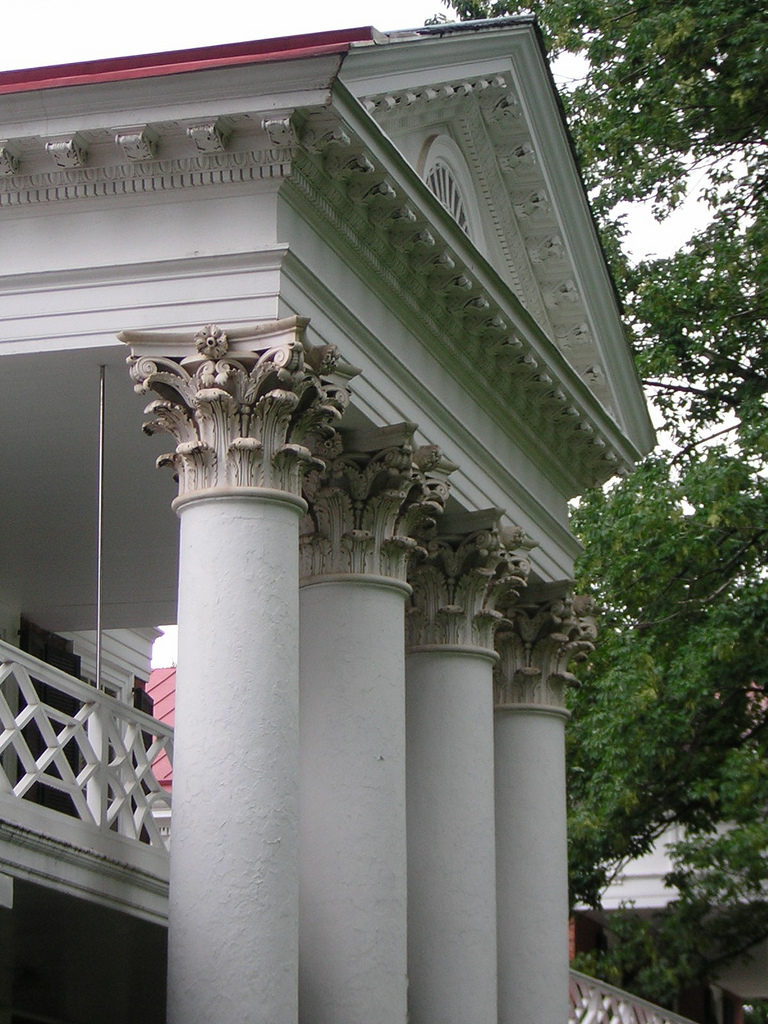
UVA Today: Beneath the Mews. As I noted on Facebook, this article covers a plethora of my interests. University of Virginia archaeologists, working underneath the floor of an outbuilding to Pavilion III, have discovered traces of an original Jeffersonian serpentine wall below where slaves were once housed—and where Virginia Glee Club conductor Harry Rogers Pratt and his wife Agnes Rothery once lived.
Pavilion III, currently undergoing a minor renovation, is said to be one of the few pavilions not to have suffered substantial exterior structural additions or alterations from its Jeffersonian incarnation. Apparently this extends to its mews, which an official Historic American Buildings Survey notes was “constructed between 1829–1830 [and] … is visible over the north garden wall.”
Which means, of course, that the Mews was the outbuilding that was visible from the rear window of my Lawn room when I lived in 3 West in 1993-94.
The other thing that’s striking about this recent announcement is the matter-of-fact inclusion of the following statement, which would have been highly controversial even when I was a student:
“In its early years, [The Mews] served as a quarters for enslaved people, and may also have served before 1865 as a washhouse and apparently, a chicken house,” said Kirt von Daacke, co-chair of the President’s Commission on Slavery and the University. “The building is important because it is one of only a handful of extant structures where enslaved people lived and worked.”
So this fixture of the landscape was silently, unremarked-on, a remnant of the secret history of slavery at the University of Virginia. I say “secret” because it was absolutely never discussed when I was a student. The guides would deny that the rooms beneath the student rooms on the East Lawn housed slaves, when it was clear in retrospect that they must have. No one talked about the fact that much of the original Jeffersonian plant was built with slave labor. And yet it was all around us. If you want an example of how screwed up America’s relationship to reality and its own history is, that’s as good as any.
Aside: the photo at the top of the post is of the front façade of the Pavilion because apparently no one takes pictures of the rear garden. It is emblematic of the history of slavery at the University that this staggeringly well-photographed Jeffersonian residence has very few photographs published of its back gardens and outbuildings. Even in the recent IATH project to create and render 3D models of the buildings, they appear to exist in a vacuum, without outbuildings.
